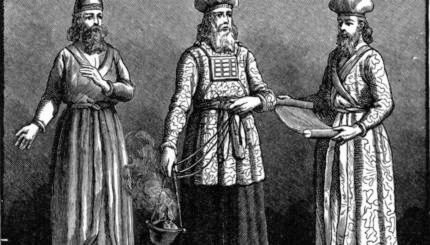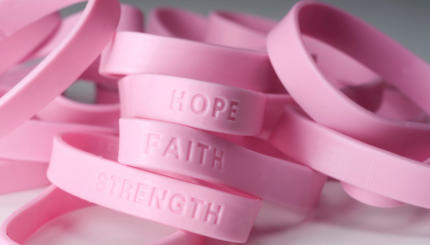Yes, I have several Mormon friends, and yes, they do make fun of each other for wearing what the more playful adherents of their religion have dubbed holy underpants.
The link between ritual undergarments and religious purity didn’t start with Joseph Smith. In this week’s Torah portion, Tetzaveh, there’s an extensive description of exactly what clothes — material, color, and otherwise — the High Priest should wear:
Exodus 28:2 And thou shalt make holy garments for Aaron thy brother, for splendour and for beauty. 3 And thou shalt speak unto all that are wise-hearted, whom I have filled with the spirit of wisdom, that they make Aaron’s garments to sanctify him, that he may minister unto Me in the priest’s office. 4 And these are the garments which they shall make: a breastplate, and an ephod, and a robe, and a tunic of chequer work, a mitre, and a girdle; and they shall make holy garments for Aaron thy brother, and his sons, that he may minister unto Me in the priest’s office. 5 And they shall take the gold, and the blue, and the purple, and the scarlet, and the fine linen.
The Torah goes even further, and actually discusses what type of undergarments the High Priest should wear. Earlier this week, when I was reading the daily Torah portion, my mind was blown, and — as per norma — I ran to my wife, who grew up Hasidic. As per norma, she laughed at me. What kind of a Jew am I, not knowing about holy underpants?
(28:42) You shall also make for them linen pants to cover their nakedness; they shall extend from the hips to the thighs. They shall be worn by Aaron and his sons when the enter the Tent of Meeting or when they approach the altar to officiate in the sanctuary, so that they do not incur punishment and die. It shall be a law for all time for him and for his offspring to come.
“What kind of pants start at your hips and go to your thighs?” I said. “That sounds like hot pants.”
“They’re underwear,” said my wife, totally calmly, as if this sort of confusion happens to us on a daily basis — which, by a much looser definition, it might. We don’t always talk about holy underwear, but we did have a conversation the other day about why our kid frequently wears underpants on her head.
I did some digging and checked around with the commentators. They all seemed to be in agreement: this was, indeed, the Tabernacle’s modernized version of a fig leaf. Rashi notes that Moses is commanded by G*d to suit up Aaron and his sons in their ritual uniforms, which includes this; a bunch of other commentators say that, because of the placement of the verse in the flow of the Torah (this particular item of clothing is listed last, after the commandment is given), Moses was not required to dress them in these particular lederhoisen. Ohr HaTorah, another Torah commentator, adds, “Were not Aaron and his sons perfectly capable of putting on their own underwear?” It’s as near verbatim as the translation lets me get.
So, there you go. Jews and hot pants — we did it first.
And, while my G-dcast co-producers and I didn’t peek beneath the holy vestments, we outlined basically everything else from the parsha in this week’s episode. Just in case, you know, you ever get appointed High Priest and the invitation didn’t include a dress code.
Parshat Tetzaveh from G-dcast.com
More Torah cartoons at www.g-dcast.com
parsha
Pronounced: PAR-sha or par-SHAH, Origin: Hebrew, portion, usually referring to the weekly Torah portion.
Torah
Pronunced: TORE-uh, Origin: Hebrew, the Five Books of Moses.


